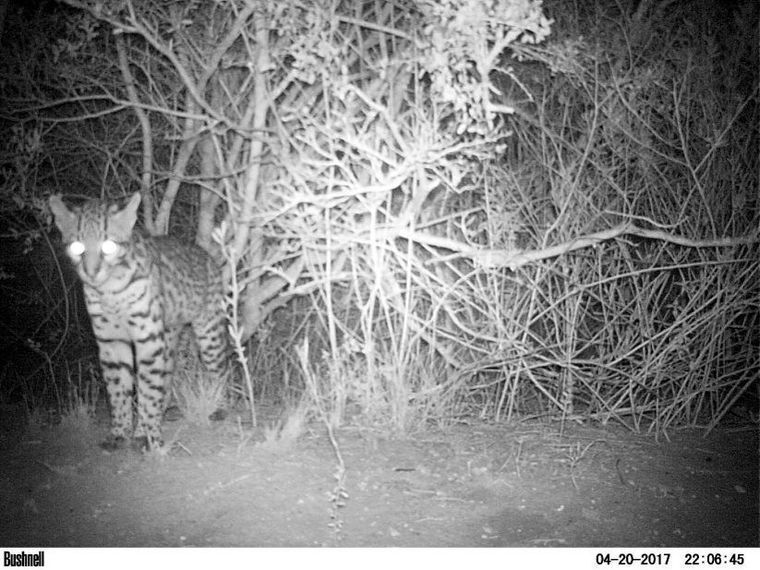What once was a plot of land is turning into a plantation.
Building on the success of a 34-acre planting last year at Laguna Atascosa National Wildlife Refuge, U.S. Fish and Wildlife officials are back again with another 34-acre plot as they continue to restore native Tamaulipan thorn scrub for ocelot habitat.
“We wanted to plant it earlier in the year but we weren’t able to get out here as soon as I had hoped, so it’s a little bit on the tail end of our planting season,” said Kim Wahl, plant biologist with the U.S. Fish and Wildlife Service. “But other than that, it’s getting a great planting crew, it’s getting the tree protectors, it’s getting initial watering, and then it will get grass control afterwards, so it’s getting everything that we can give it to give that high success rate.”
Last year, using innovative white plastic tree tubes to protect delicate seedlings from browsing animals like white-tailed deer and nilgai, the planting recorded a survival rate of 93 percent. Successful reforestation efforts without the tubes can be as low as 20 percent, or even zero percent.
The goal of the restoration efforts is to remove the dominant mesquite and non-native guinea grass to replicate the variety of fauna found in the Rio GrandeValley prior to the advent of major agricultural production during the early 1900s.
Beneficiaries will be the endangered Texas subspecies of ocelot, along with hundreds of other mammal, reptile and bird species in the Rio GrandeValley.
Some of the 34,000 native plants to be sown on the second 34-acre plot, like snake eyes or devil queen, Texas torchwood, crucita, trixis, lantana, Berlandier croton and Manzanita, are benefiting from another innovative planting/protection method called a cocoon.

By RICK KELLEY Staff Writer




